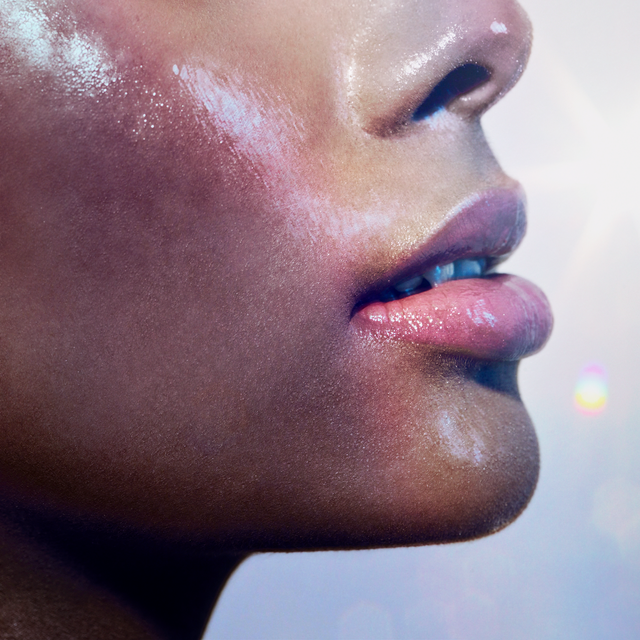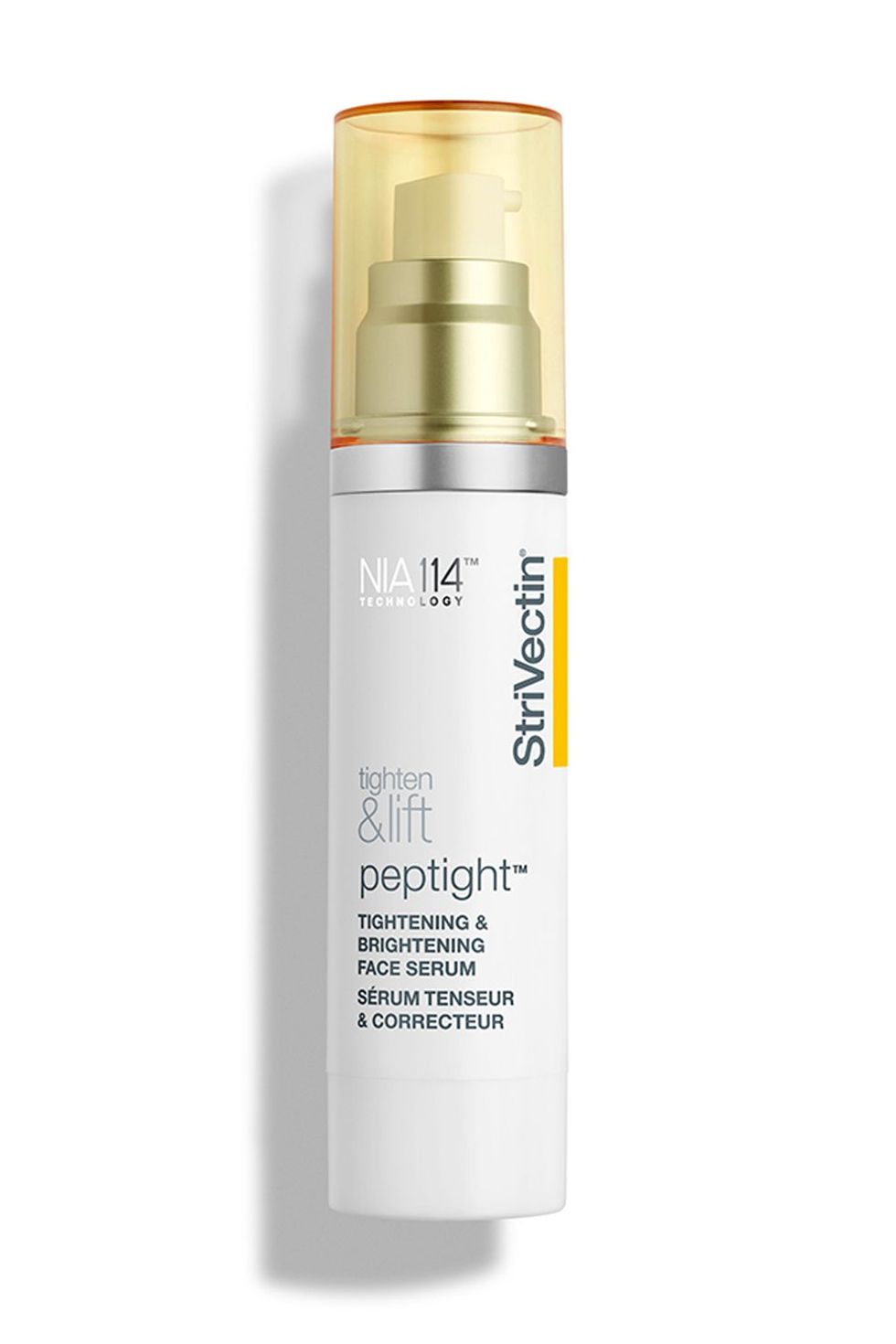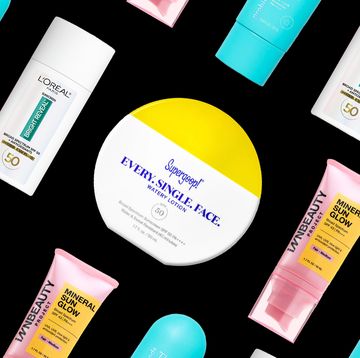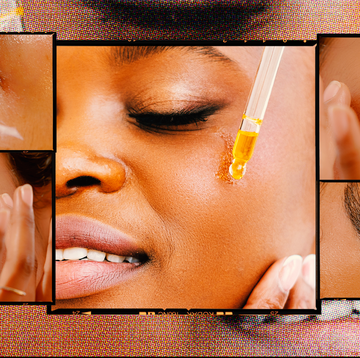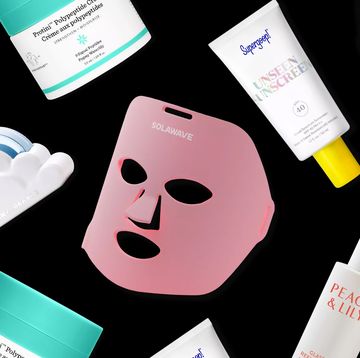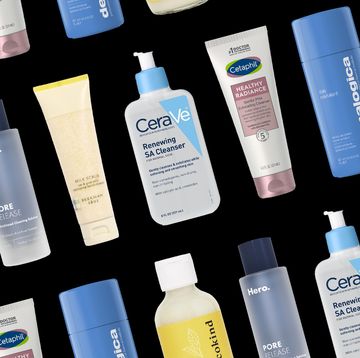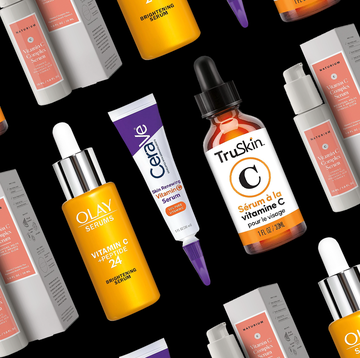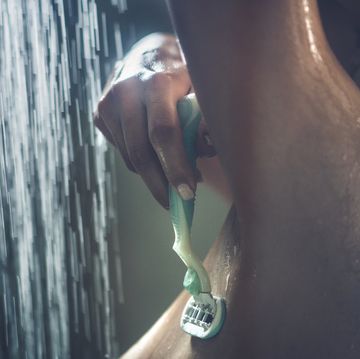I've got some very cool news for all my skin-obsessed friends: There's an in-office treatment that legit helps lift, tighten, and contour your skin—all without getting injected or going under the knife. It's called laser skin tightening, and I'm genuinely kinda obsessed with it. Like, who wouldn't be into a non-invasive way to get a more chiseled jawline, higher cheekbones, and all-around smoother, firmer skin?!
And the great thing about laser skin tightening (unlike other professional lasers and treatments) is that anyone—no matter your skin type or tone—can try it. Ahead, everything you need to know about laser skin tightening, including how it works, the best laser skin tightening devices to try, and what to expect after a treatment if you decide to try laser skin tightening for yourself.
How does laser skin tightening work?
The name of the game here is collagen production. Collagen is a protein naturally found in our skin that's responsible for its smoothness and firmness, and once we hit 30 years old, our bodies stop making it as quickly and efficiently as they used to. Collagen also diminishes as a result of UV damage and inflammation.
But that's where laser skin tightening comes into play—it jumpstarts the collagen production process by creating a "controlled wound" in the skin via heat energy, explains plastic surgeon David Shafer, MD, of Shafer Clinic in New York City. As your skin heals, collagen production ramps up, which in turn, creates that tight and lifted appearance.
What are the best laser skin tightening treatments?
You've got a lot of skin-tightening devices to choose from, and they all work a little differently to provide slightly different results. Dr. Shafer describes it best: Think of your skin like a bed—the deeper layers are the mattress, the middle layers are your sheets, and the top layers are the duvet cover. If you want your bed to look nice and smooth after you make it, you need to make sure each layer is pulled tight.
So you can think of these devices the same way. The various types of laser tightening devices—including resurfacing lasers, radiofrequency and RF microneedling, and ultrasound—target different layers of the skin to pull them tight. Here, a quick breakdown of the three main methods for laser skin tightening:
Resurfacing lasers
These types of lasers (like Clear + Brilliant and Fraxel) work their smoothing magic on the top layers of the skin to soften fine lines and wrinkles and reduce the appearance of large pores. Using them is like ironing out the duvet cover—great at improving your overall skin texture, but don't expect any *major* lifting or firming.
As for pain and downtime, the more intense the laser, the more painful the treatment and longer the recovery period. Ask your provider to let you sit with numbing cream on your face for at least 30 minutes pre-laser, and just be prepared to look like you have a bad sunburn for anywhere from a few hours to a few days after your treatment.
Radiofrequency and RF microneedling
Radiofrequency devices (like Exilis and Thermage) use a handheld tool to penetrate heat deeper into the skin, targeting the "the sheets," or the middle layers of the dermis. The heat stimulates collagen production, which, in turn, gives your skin a tighter, more lifted appearance. The downtime is pretty minimal (expect a little bit of redness post-treatment) and the pain is manageable. Most people say the treatment feels like a hot stone massage for your face—hot, but tolerable.
RF microneedling takes things a step further by combining radiofrequency and microneedling. There are a bunch of RF microneedling devices out there (I've tried Pixel8 and Vivace, but Infini, Morpheus8, and Endymed are other popular options to consider), and they all involve "stamping" the top of layers of the skin with tiny needles that emit radiofrequency waves once they're in the skin.
The combo of trauma from the microneedling and heat from the radiofrequency trigger a wound-healing response in the skin that kickstarts collagen production. Hot needles being stamped into your skin isn't exactly a pleasant feeling, so your provider should numb you for at least an hour before you get started. As for downtime, expect anywhere from a few days to a full week of redness post-treatment.
Ultrasound
You might have already heard of Ultherapy, a treatment that uses micro-focused ultrasound waves to heat the deepest layers of the dermis and superficial muscle (so, if you're thinking about the bed analogy, this is the mattress). This heat triggers collagen production to create a tightening effect and improve the structure of your skin. And because ultrasound waves penetrate deeper than a resurfacing laser or radiofrequency treatment, the results are more dramatic. There's luckily no downtime with ultrasound, but it def hurts. Most patients are numbed and given nitrous oxide (aka laughing gas) or an oral pain killer before the treatment, says Dr. Shafer.
There's also a newer ultrasound treatment available called Sofwave. It doesn't penetrate as deeply as Ultherapy, but it's still clinically proven to tighten skin and smooth the look of fine lines and wrinkles. If you're ready to baby-step into the world of ultrasound, Sofwave is a great option since it's painless with a little numbing cream and has zero downtime too. Plus, the treatment is quick (about 35 minutes), is safe for all skin tones and skin types, and you only need one session to see the results, adds plastic surgeon Barry DiBernardo, MD, of New Jersey Plastic Surgery in Montclair, NJ.
How long do the results of laser skin tightening last?
This really depends on the type of treatment performed, the intensity at which it's performed, and how well you take care of your skin after your treatment, says Dr. Shafer. If you opt for a resurfacing laser, you'll see visible results about a week after your treatment and then for up to three months beyond that.
The benefits of radiofrequency and RF microneedling are both immediate and long-term, which I personally love. After trying RF microneedling, my skin was noticeably smoother and plumper a week post-treatment and looked even tighter and more contoured at the one-month mark. As for ultrasound? The results take a bit more time to kick in—about three months to be exact.
Not matter what method of skin tightening you try, practicing good skincare post-treatment is key for maxing out the benefits. That means using a gentle cleanser, a tightening serum (check out the ones below) with ingredients like retinol, growth factors, or peptides to amp up collagen production, and daily sunscreen with SPF 30 or more (remember, UV is collagen's enemy).
How much does laser skin tightening cost?
Again, this depends on a few things: where you live, who does your treatment, and the type of device your provider uses, but in general laser skin tightening isn't cheap. Here's a quick breakdown of what it'll set you back:
- Resurfacing lasers: $300 to $1,500 per treatment, 1 to 4 treatments recommended
- Radiofrequency and RF microneedling: $600 to $1,500 per treatment, 1 to 4 treatments recommended
- Ultrasound: starts at $2,500 per treatment, 1 to 2 treatments recommended
Is laser skin tightening worth it?
If you can afford it, 100 percent yes, it's worth it. Laser skin tightening is an incredibly effective treatment for anyone who wants to improve their skin texture and/or tighten and lift their skin. It's preventative too—so even if you're in your 20s or 30s and aren't seeing signs of aging yet, you can still be a candidate.
Just remember that you'll likely need more than one treatment to achieve the best possible result, so you'll want to factor that into your budget. The other important thing to keep it mind? The results take some time (collagen doesn't just grow overnight, k?) so if you're trying laser skin tightening for a big event, be sure to schedule your appointment a few months in advance.
Lauren Balsamo is deputy beauty director at Cosmopolitan, where she writes, edits, and produces all types of beauty content—from product reviews to personal essays and trend reports. She has covered beauty for nine years at Cosmopolitan and has contributed to Women’s Health and Seventeen magazines as well. Follow her on Instagram.
